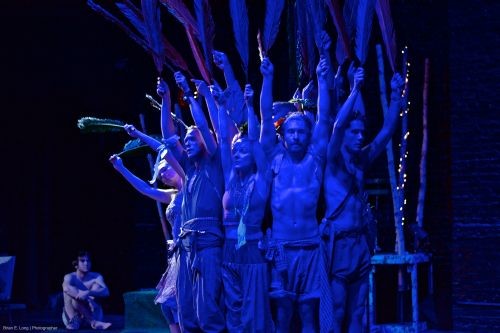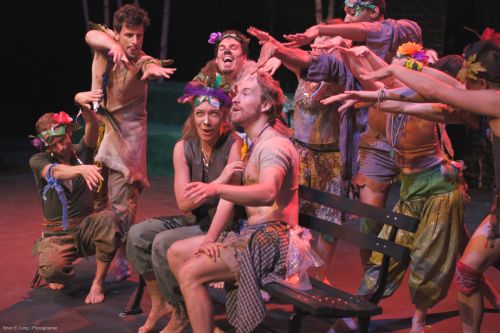 United States Purcell, The Fairy Queen: The Sebastians, Jeff Grossman (musical director), Christopher Caine (director and choreographer), East Thirteenth Street Theatre, New York, 18.8.2014 (SSM)
United States Purcell, The Fairy Queen: The Sebastians, Jeff Grossman (musical director), Christopher Caine (director and choreographer), East Thirteenth Street Theatre, New York, 18.8.2014 (SSM)

I had some difficulty starting this review. No, not the normal writer’s block, but rather a struggle to find the adjectives that would do justice to this performance. “Well-done,” “excellent,” “captivating,” “seductive,” “clever,” “charming”: yes, it was all these. But there was something special that this performance had and the only word I can think of to describe it is one that can be dull and emotionally neutral, but is also filled with all sorts of issues: “authentic.” This word normally takes me somewhere that I don’t want to go: “historically informed productions,” “original instrumentation,” “vibrato-less playing,” “white voices,” “temperaments” and “correct pitches.” There were parts of this production that one might question the authenticity of the performance. But it was authentic, not because it followed or didn’t follow certain stylistic guidelines, but because it carried with it what I see as the spirit of Henry Purcell. We’ll never know, of course, the specifics of the actual productions in his lifetime, but I can’t imagine that they were very far from this performance. I was captivated from beginning to end, caught up in the group’s unflagging energy and enthusiasm. We know New York is the home of many talented people hoping for a break, but to put together a troupe of such multi-talented performers is a credit to the dell’Arte Opera Ensemble team and Christopher Caines.
This particular production is similar in concept to William Christie’s and Jonathan Kent’s 2009 performance from Glyndebourne, revived the following year at the Brooklyn Academy of Music. Both creatively incorporated text from Shakespeare’s A Midsummer Night’s Dream, in a sense using it to make the semi-opera whole. Christie/Kent’s Fairy Queen was lavishly produced, with imaginative sets and costumes plus well-known singers. Both productions had their moments of anachronism with occasional topical subjects added to the text, be it “Brooks Brothers” used as a synecdoche (but uttered a little too frequently here), or Kent’s copulating rabbits in the earlier production. (Don’t ask!) Both incorporated actors, vocalists and dancers, but the key difference here is that in the Christie/Kent version, there was only one person on stage capable of multiple skills: Robert Bolt, who acted, sung and played the flute. In the Caines version, many are multitalented.
One of the weaknesses of an otherwise fine recent production of Handel’s Acis and Galatea was the clear discomfort of the vocalists who awkwardly stood around as dancers from Mark Morris’s troupe flew by. A little acting skill was all that would have been required for the soloists to overcome their anxiety. Baroque opera is a mixed art form, each genre requiring different or multiple talents. The talents needed for a semi-opera are different from what’s required for an opéra-lyrique or an opéra-ballet. The real success of this performance was the ability of most members of the troupes to break down the barriers between art forms. When all are involved and all work together as an entity, the parts are subsumed to make a greater whole.
Not every aria was pitch perfect, not every actor was a Hamlet, not every dancer had twinkle-toes or was expected to dance like Aynsley Inglis or Luke Tucker. Purcell writes that we should “sing while we trip it on the green.” Tripping on the green requires no dancing lessons. There was some exceptional singing here, voices that should be heard and appreciated by a wider audience. There was an energy that is rarely present in other performances as a result of everyone being on stage most of the time. Vocalists came out from the crowd, sang and slipped back to the group.
The musical accompaniment may have been stripped down, but there was never a feeling of thinness. When needed, Baroque trumpets were added. The musicians performing the obbligato parts of some of the arias never drew attention to themselves, and at the quieter moments never “disturbed” the characters’ “sleeping sense.”

Purcell was that rare composer who seemed to have had an endless fount of melodies. These wonderful songs and arias, whose motifs would fill happily any other composers’ notebooks, are for Purcell literally throwaways. It was entirely appropriate to draw the curtain covering the picture of Purcell in the last act. However, it was clear to me that he had been with us through the entire production.
Stan Metzger
